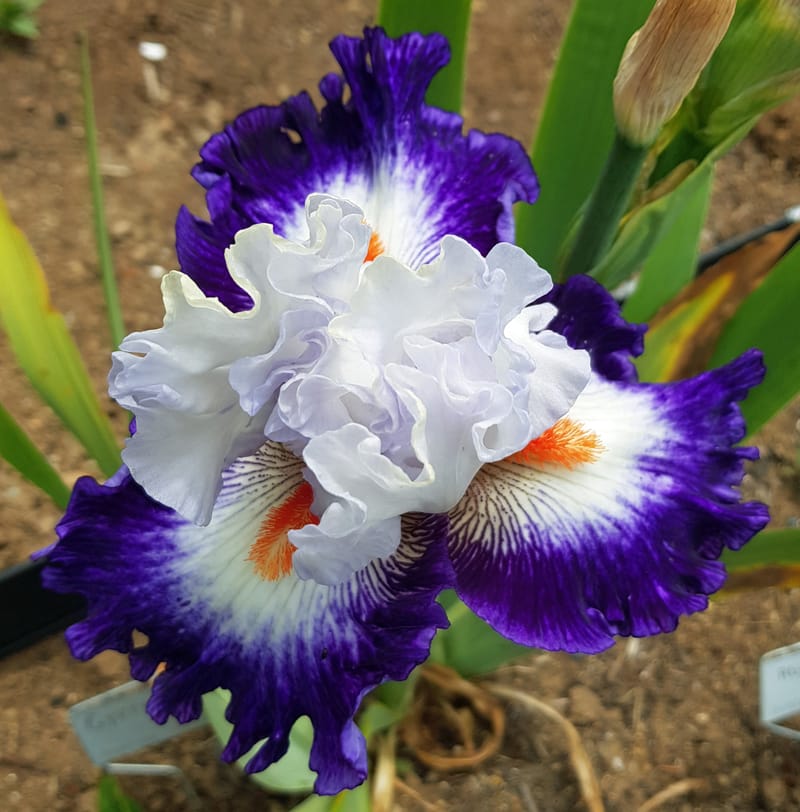Iris "Flower Patterns" & Colors

SELF
The falls and the standards of a self are the same color. These irises really stand out in a garden setting and are wonderful companions to other plants.
BITONE
Standards and falls are different shade of the same color, falls being darker.
REVERSE BITONE
Standards and falls are different shade of the same color, standards are darker.
BICOLOR
Standards are a different color from the falls.
VARIEGATA
A specific type of bi-color where the standards are yellow(ish) and the falls are always red, purple or brown toned or streaked
AMOENA
A specific type of bi-color where the standards are white or near white and the falls can be any color.
REVERSE AMOENA
An amoena with colored standards and white falls
NEGLECTA
A blue or purple-blue bi-tone iris with lighter (light bluish) standards.
EMMA COOK PATTERN
A darker ring of color around the falls of the flower.
DEBBY RAIRDON
Colored standards, white falls with a band of standard color around the edges. Often yellow, but can be peach, pink, etc. as well.
BLEND
Combination of two or more colors, can be smoothly or unevenly mixed.
PLICATA
Plicatas have stippled, dotted or stitched edges on a white or yellow ground. (The Plicataman himself, hybridizer Keith Keppel, reminds us that the definition of a plicata as having a white or yellow ground needs to amended, "as hybridizers have worked hard and we now have lots of plicatas with pink or apricot ground, and we're working to intensify the depth of color so you can really say 'orange, and mean it!")
LUMINATA
Another glowing iris type, the luminata, is an iris with a white or yellow base washed over with color so that it appears to glow from within. |
GLACIATA
An iris with no purple anthocyanin pigment. These irises often seem to glow.
BROKEN COLOR
These flowers have splotches, blotches, and streaks in random patterns.
LINES and SPECKLES
Veining appears to be either a solid line or “dotted” line or both.
Umbrata
While I have only seen this applied to one iris, and it is not on the official lists, have added it here for that one iris. The umbrata pattern is characterized by a dark pigmented layer on the falls that can be scratched revealing a lighter pigmented area underneath.
Dark Top
Standards are darker than the falls. May also be referred to as a reverse amoena, reverse bi-tone or bi-color.
Many new and exciting color combinations and patterns are emerging in the world of iris hybridizing, so many that it's hard to figure out if they fit into an existing category or if new ones should be created